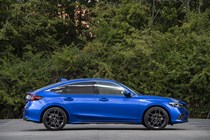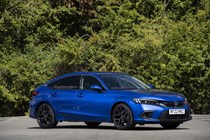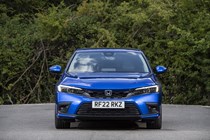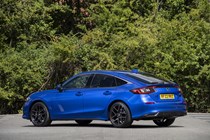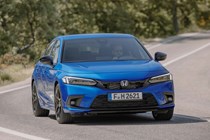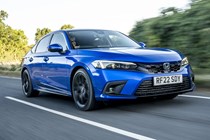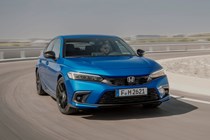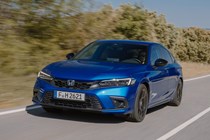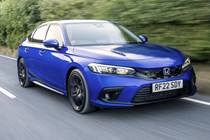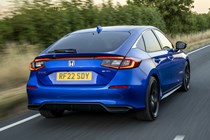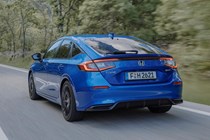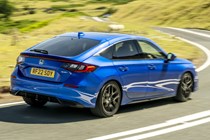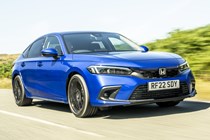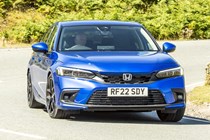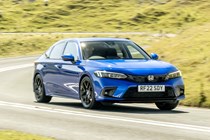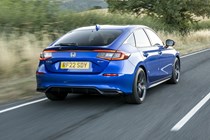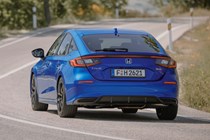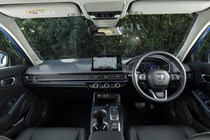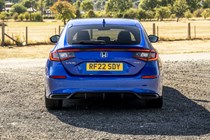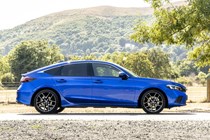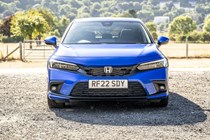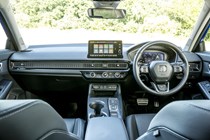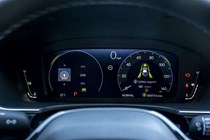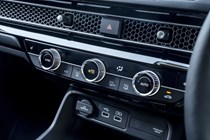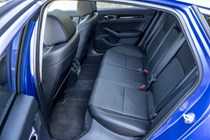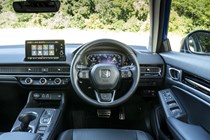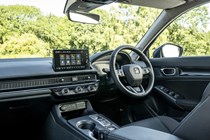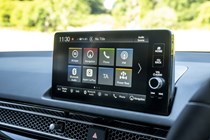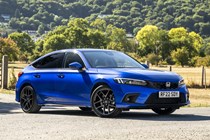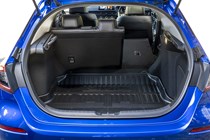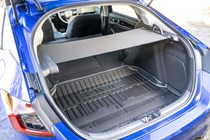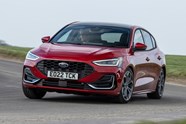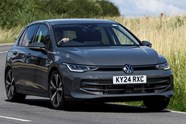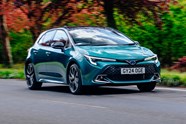
Honda Civic review
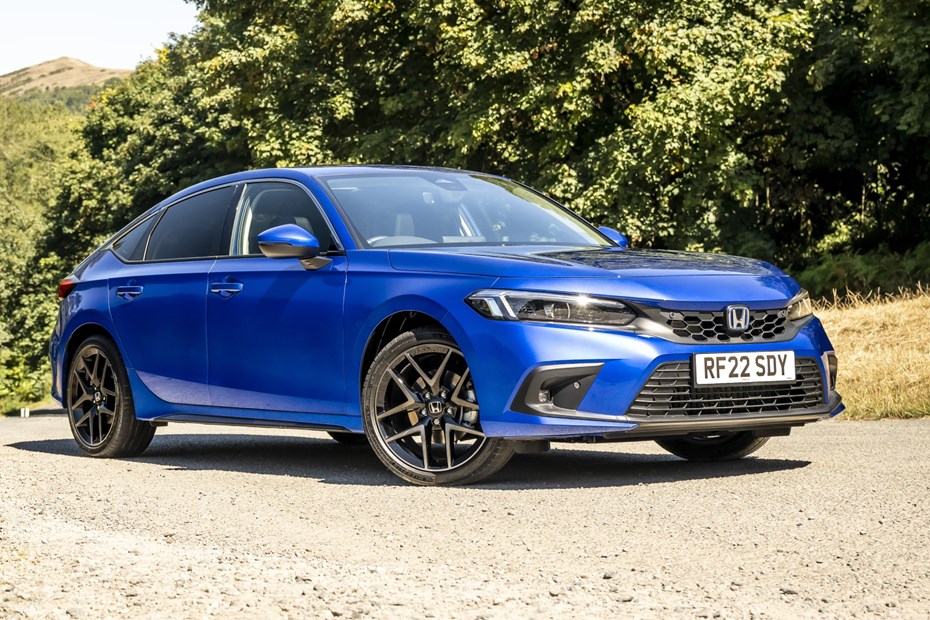
At a glance
| Price new | £35,780 - £40,680 |
|---|---|
| Used prices | £20,000 - £31,845 |
| Road tax cost | £195 - £620 |
| Insurance group | 28 |
Get an insurance quote with

|
|
| Fuel economy | 56.5 - 60.1 mpg |
| Miles per pound | 8.3 - 8.8 |
| Number of doors | 5 |
| View full specs for a specific version | |
Available fuel types
Hybrid
Pros & cons
- Impressively powerful, responsive and efficient engine
- High-quality and good-looking interior
- Ride and handling best in the class
- No entry-level model
- Rear headroom a bit tight
- Range lacks choice
Honda Civic Hatchback rivals
Overview
The Honda Civic is a hybrid car worth savouring. With its adroitly executed combination of practicality, sharp looks and driving thrills, the Civic may now be in its 11th generation but it hasn’t lost a step. A true embodiment of Honda’s approach to family car design, with a single powertrain option that somehow manages to be the best of both worlds.
In fact, this family hatchback is so good, we crowned it our Best Medium Family Car in the Parkers New Car Awards 2024. Our testers love how simple the trim levels are, what good value it offers and its talented hybrid engine. It dispenses with a transmission altogether, instead, for much of the time the engine acts solely as a generator, charging the batteries to power the electric motor. And don’t think it’s all tech. The interior rivals anything from its European contemporaries, with particular care bestowed upon the main touch points such as the heating controls and steering wheel.
As hybrid rivals go, the Toyota Corolla is a tough act to follow, and plug-in hybrid versions of the VW Golf or Peugeot 308 provide an extra layer of electrification too. If you want a fire breathing 329hp model, there’s also the Honda Civic Type R.
Is it all enough to stop family buyers flocking away to compact SUVs? We’re not sure, but it ought to be. There are real benefits to choosing a car like this instead of a crossover, from fuel economy to a more pleasant driving experience to – genuinely – standing out from the crowd a little bit.
Keep reading to find out what we think of the new Honda Civic’s interior, practicality and engines. We’ll tell you what it’s like to drive and how much it’ll cost, what it’s like to run over an extended period, and, of course, whether you should go out and buy one. If you’d like to find out exactly how we tested the Honda Civic, head over to our how we test cars page.
Watch our Honda Civic video review




